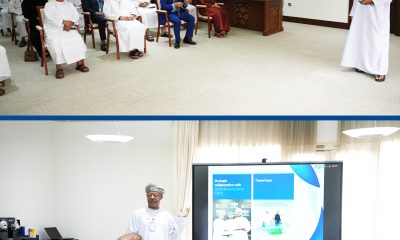Bahrain
S&P revises Bahrain’s outlook to positive over improving fiscal prospects

Global ratings agency Standard and Poors (S&P) revised its outlook on Bahrain to positive from stable following the implementation of the government’s budget-deficit-reducing measures and other reforms. It further affirmed the ‘B+/B’ long- and short-term foreign and local currency sovereign credit ratings.
The agency expects the country’s external vulnerabilities to decline because of support from other Gulf Cooperation Council (GCC) sovereigns.
The positive outlook signifies that the credit rating agency could raise its ratings of Bahrain in the next 12 months if its fiscal performance proves stronger than expectations.
Read: Bahrain’s Bank ABC launches digital, mobile-only retail bank ‘ila’
“The positive outlook primarily indicates that we expect the government to implement further reforms to keep fiscal deficits on a decreasing trajectory. Budgetary consolidation is supported by the implementation of two pillars of Bahrain’s fiscal reform plan–the introduction of a value-added tax (VAT) and a voluntary retirement program,” said the agency in a report released on Friday.
Bahrain has introduced VAT at the beginning of the year, while the public sector voluntary retirement scheme was completed in 2019.
Fiscal deficit is expected to decline to 4.2% in 2022, compared with an average of 12% over 2015-2017, but will fall short of the government’s balanced budget target.
“Although we still forecast that the government’s debt stock will grow, part of the growth will stem from concessional lending by other GCC sovereigns, of which US$3.7 billion of the pledged US$10 billion in support has been received. We expect the remainder of this amount to be available over the coming years, without conditions,” said the agency.
The positive outlook also demonstrates the more stable external position, with support from other GCC sovereigns bolstering reserve assets, it added.
The agency projected the real economic growth will average 2.3% over 2019-2022, supported by infrastructure investment. It, however, remained concerned over domestic stability considerations over limiting the pace and level of implementation.
Read: MENA economies on top in World Bank’s Ease of Doing Business 2020 report
An increase in non-oil revenues in 2019 due to the introduction of VAT, which could increase revenue by 1.5 per cent of the GDP per year, S&P said.
The report highlights government interest payments as an increasing expenditure item. “They are expected to comprise almost 21% of total expenditure by 2020, up from about 6.5% in 2014. Throughout our three-year forecast period, the GCC support package will comprise a growing proportion of total debt. It currently comprises about 10% of total government debt,” said the report.
-

 Magazines2 months ago
Magazines2 months agoOER – September 2025 Issue
-

 Alamaliktistaad Magazines2 months ago
Alamaliktistaad Magazines2 months agoAlam Al Iktisaad – September 2025 Edition
-

 News1 month ago
News1 month agoKitchenomiKs Secures Investment of US$3.2M Led by Jasoor Ventures
-

 News2 months ago
News2 months agoCent Capital, AI Finance App by ex-AWS Strategist ‘The Beast of Bay Area,’ Launches to End Financial Anxiety, Hits $1M AUM
-

 News2 months ago
News2 months agoOman Inaugurates ‘Hadatha’ – Its All-New Cybersecurity Center
-

 Banking & Finance2 months ago
Banking & Finance2 months agoOman Arab Bank Highlights Its Ongoing Strategic Initiatives and Future Plans
-

 Energy1 month ago
Energy1 month agoWLGA Middle East LPG Summit & Expo 2025 to be held at OCEC on November 10 and 11
-

 News2 months ago
News2 months agoIEA Expects Global Oil Market to Remain Oversupplied in 2026






























